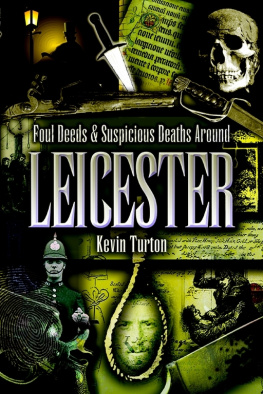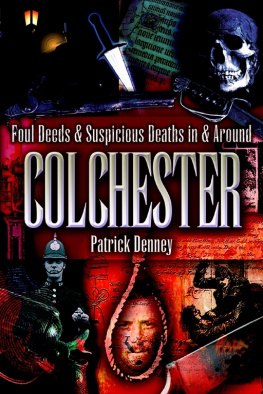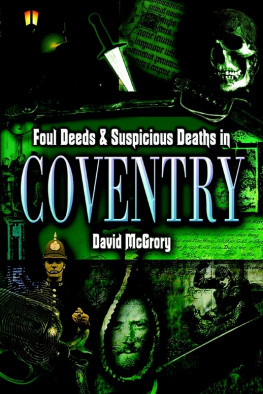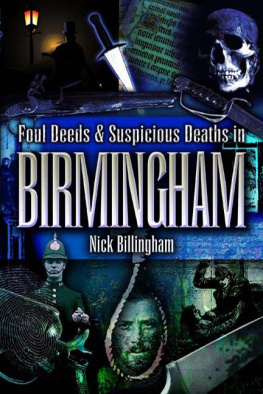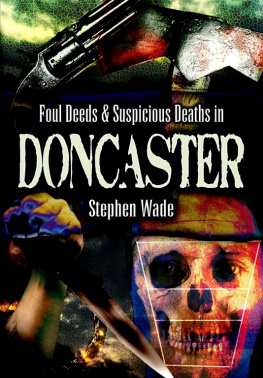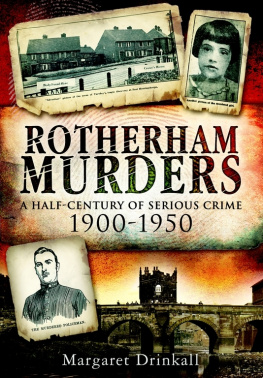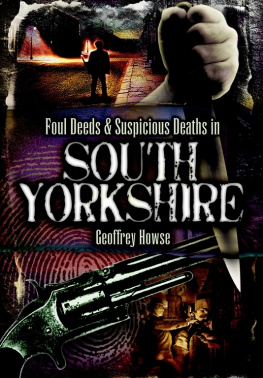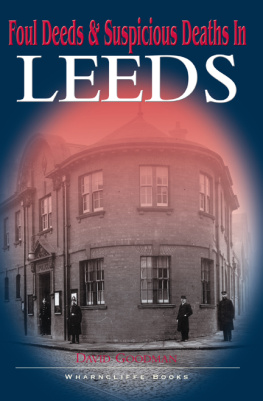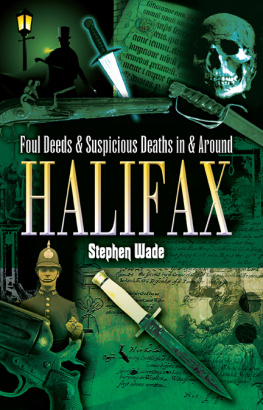
First Published in 2003 by
Wharncliffe Books
an imprint of
Pen and Sword Books Limited,
47 Church Street, Barnsley,
South Yorkshire. S70 2AS
Copyright Kevin Turton 2003
For up-to-date information on other titles produced under the Wharncliffe imprint, please telephone or write to:
Wharncliffe Books
FREEPOST
47 Church Street
Barnsley
South Yorkshire S70 2BR
Telephone (24 hours): 01226 - 734555
ISBN: 1-903425-27-1
eISBN: 978-1-78303-801-5
All rights reserved. No part of this publication may be reproduced, stored in a retrieval system, or transmitted, in any form or by any means, electronic, mechanical, photocopying, recording or otherwise, without the prior permission in writing of the publishers.
This book is sold subject to the condition that it shall not, by way of trade or otherwise, be lent, resold, hired out or otherwise circulated without the publishers prior consent in any form of binding or cover other than that in which it is published and without a similar condition including this condition being imposed on the subsequent purchaser.
A CIP catalogue record of this book is available from the British Library
Cover illustration : Front - courtesy of The Art of Mystery and Detective Stories, edited by Peter Haining. Souvenir Press Ltd.
Rear - All Saints Church, Rotherham. Brian Elliott .
Printed in the United Kingdom by CPI UK
Contents
Introduction
There are few circumstances in life where we would expect anyone other than our closest friends and relations to know anything of our existence. We brush past lives on a daily basis yet never reveal the nature of the sentient being we are or have become. Death is the only mechanism by which the veneer wrapped around our life can be stripped away. Even then, the exposure tends to be superficial. For we are almost always protected in death by those we know in life.
Murder and suspicious death changes this. When proved as a crime it is heinous, its impact upon those you have known devastating. Yet to those who have no knowledge of our life it is empowering. The very nature of either means disclosure must follow. Dissemblance is not an option. Lives are revealed piecemeal through both press and courtroom. The victim becomes public property in a manner never intended by the way they lived their life.
Yet we rarely feel animosity toward them. Instead we agonise over the disclosures, are harrowed by the detail and unnerved by the possibilities. We both accept and understand the need for such public exposure. The dissolution of a life is a price worth paying if a killer is caught.
Foul Deeds and Suspicious Deaths in Rotherham is a collection of true stories recounting the events that shattered a number of lives and for whom this dissolution is long past. It does, I hope, also give an insight into the society in which these people lived, the social conditions prevalent at the time and the manner in which the law handled those accused.
Forensic medicine is a relatively recent innovation. Until 1901 it was impossible to differentiate between blood types. Biologist Karl Landsteiner was the first scientist to discover that blood could be grouped as type A, B, or O; AB was not discovered until 1902. So prior to this, police were only ever able to determine blood staining as either animal or human. Serology, the modern means of distinguishing between these groups through identification of blood serum and its constituent parts, was not developed for a further fifty years. Following this has developed the science of DNA. We are therefore, far better today at determining the events surrounding a violent crime and identifying its perpetrator, than at any time in our history. All of which means criminal trials in our recent past could be extremely hazardous affairs.
Examining those cases that aroused such public interest in Rotherhams past has been a voyage of discovery, not only in the social history it uncovers but also in the changing attitudes to crime generally. In 1865 Rotherhams population was in the region of 19,000. Violent crime was less widespread than perhaps imagined. Therefore, crimes of this nature were widely reported, as were suicides and any death where suspicious circumstances suggested a third party involvement. In turn these created an avid readership for the press coverage they generated, more so murder, which often attracted large crowds to Rotherhams courthouse; the cases themselves being published in almost verbatim fashion by newspapers whose readership appears to have had a voracious appetite for close detail. By the outbreak of World War Two this began to change. Reportage became less detailed and by the fifties, when the towns population expanded to over 250,000, there are more headlines than known facts. So I am extremely grateful to the reporters of the Rotherham Advertiser , who over the years covered by this book, have created for the historian/writer a wealth of information and knowledge, though the task of combing their pages is a tedious one.
Does all this mean Rotherham has become a more violent place in which to live than it once was? Most certainly not. Crime in whatever guise has been a part of our society for the whole of history. What intrigues us, perhaps some would say in rather a macabre way, are the intertwining human relationships that are often the reasoning behind the most heinous of crimes. Agatha Christie, Patricia Cornwall, Reginald Hill, to mention but a few, could not exist if we were not beguiled by the characters populating their books. Characters, some of whom we know to be killers, whose complex personalities range from the diffident to the conceited and are the cause of our buying interest. True crime is no different.
In researching this book I found myself enamoured by some of the true life characters I feel I met, and filled with a sense of aversion to others I would have no wish to meet. The story of Annie Marriott, her baby and how society in 1891 treated her moved me considerably. So did the appalling tragedy of the double murder at Kimberworth. The strange death of Henry Cook left me wanting to know more about such an intriguing man who had lived through hardship in an area of Rotherham I knew so well from my own childhood; whilst the social deprivation of the thirties was brutally brought home to me as I uncovered the heart-rending story of Nora Taffinder. Real lives and real adversity.
Most of whom, I feel it fair to say, would have long since faded into obscurity were it not for Rotherham Library and in particular the staff of Rotherham Librarys Local Studies and Archives section whose largess has known no bounds and whose meticulous attention to detail in maintaining accurate reference records is superb. My grateful thanks to all.
So, be moved to tears or riven by anger as you glimpse the lives of those who make up this collection of true events, but above all enjoy the journey.
Chapter 1
Highway Robbery and Murder John Whitaker 1856
J ohn Whitaker showed no outward signs of being a wealthy man. He lived a relatively frugal life despite owning and working his farm at Thrybergh. He had invested little money in the farms outbuildings over the years and had shunned all suggestions to rebuild the dilapidated farmhouse he had occupied since his fathers death. In fact this appearance of impoverishment had given credence to local opinion that his general financial health was poor. This in turn made his occasional acts of generosity toward his neighbours more endearing to the community at Thrybergh than it did to the small circle friends who knew him well.

Next page

